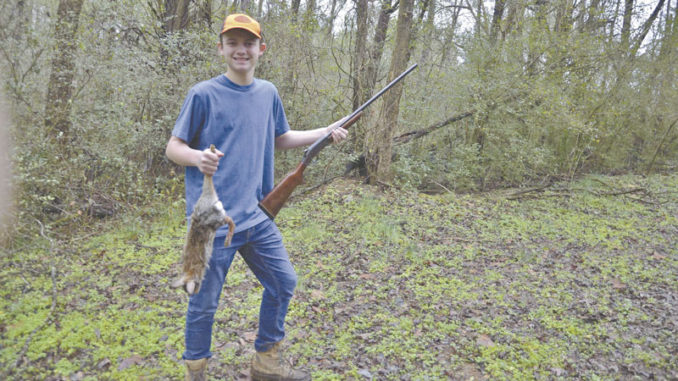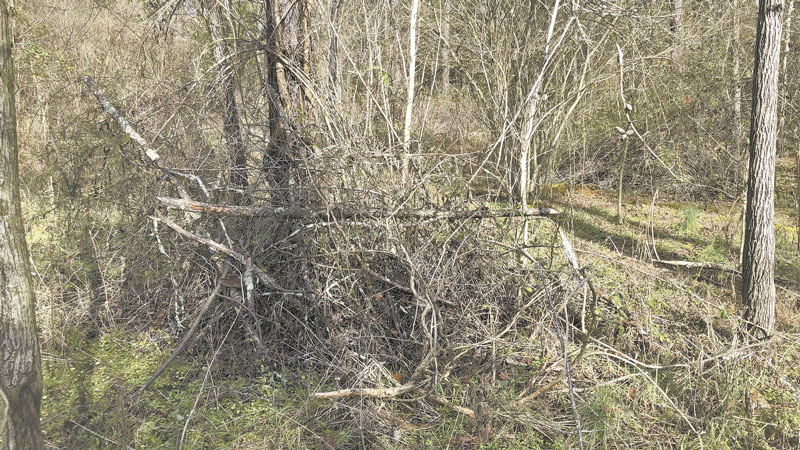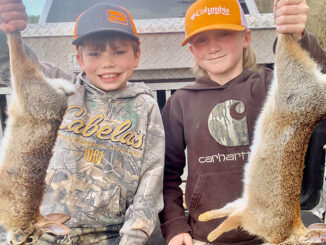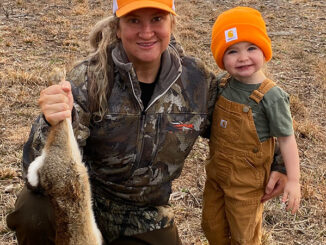
With deer season out of the way, small-game hunting takes spotlight
The holiday season has ended and the new year is here, and that’s good news for Carolina rabbit hunters. Sportsmen can still receive wonderful gifts from Mother Nature. Hunting seasons are still open in the Carolinas for several species, including rabbits. Hunters with a pack of beagles and a small farm can have a blast.
During the past century, the Carolinas have experienced rises and falls of many wildlife populations in certain areas of both states. Some areas were almost entirely void of wild turkey and white-tail deer. Most counties in both states are now well stocked with these big-game species. But fluctuations in their populations still exist.
Rabbits, on the other hand, are abundant across every county in North Carolina and South Carolina. Even with the increase in predators and decrease in natural habitat, rabbits are resilient and continue to flourish everywhere.
Baby makers
Rabbits are prolific breeders. After only a few months of life, rabbits are biologically mature enough to breed. They have 30-day gestation periods and can have as many as 12 babies in each litter. And unlike many mammals, rabbits can become pregnant immediately after birth. That can enable a population of rabbits to multiply very quickly. Most female rabbits in the wild have around 20 babies per year.
A flourishing population of these furry critters is music to a rabbit hunter’s ears. Winter is prime time to break out the beagles for an old-fashioned bunny chase. One of the best aspects of running rabbits with dogs is rabbits are known to cover a small territory where hunters can have good success without getting out of hearing range of their trucks.
Rabbits typically will not leave their home range when being pushed by beagles. They will not flee too far away from their escape cover. Rabbits run in circles and will return to where they were initially jumped.
Carolina rabbit hunters are in luck as far as finding a place to chase a bunny. That’s because rabbits can and do live about anywhere in these two states. From woodlands and cutovers to farm fields and old home sites, rabbits flourish in a wide variety of habitats.
Pass the greens
Rabbits are herbivores and will feast on tender, green, herbaceous foliage, as well as, low-lying, woody vegetation. These types of foods are abundant on about every tract of land on this side of the planet. That’s true throughout all four seasons. But tender, green vegetation is more limited during the winter. And rabbits prefer green vegetation high in protein and carbohydrates during winter. Places thick with white clover and other flourishing green vegetation will bring rabbits in like corn does for ducks in a waterfowl impoundment.
But, a strong food source for rabbits also brings in another group of consumers: predators of the aerial and terrestrial variety. Most predators would like a Carolina rabbit for breakfast, lunch and dinner. Rabbits will proliferate in places both abundant with food and in close proximity to escape cover. They will flock to good food sources. But predators pick off fewer rabbits in areas abundant with escape cover.
Ground cover essential
Rabbits need thick brush at the ground level. That can be blackberry briar thickets, stump piles, fallen treetops, heavy grass/shrubs or any type of ground cover discouraging to a hawk, fox, neighborhood cat or coyote. Rabbits will dig burrows called “wardens” inside the protection of the thick cover.
Rabbits are social animals and live in relatively large colonies. Suitable winter food sources abundant with cover are prime places to find them. In addition, the annual breeding season kicks off in January. That will encourage rabbits to gather in these prime habitats, providing beagles with plenty of targets to chase. Hunters can release dogs into the briar patch repeatedly and often keep running out new rabbits on each release.
Rabbit hunting is one of the last remaining outdoor traditions in the Carolinas. But with plenty of rabbits and ample habitat, it can continue for future generations. Not only is rabbit hunting an enjoyable activity, tasty rabbit meat is one culinary option not to miss.

Create brush piles
Brush piles aren’t just for crappie fishermen anymore. Rabbit and bobwhite quail can benefit from brush piles as escape cover near food sources. Winter food sources for small-game species are important to sustain animals through the winter. But the escape cover around these food sources is just as important and really critical to survival. Brush piles are perfect additions to any winter food source, and landowners can easily create these features on their property with little effort.
Brush piles provide winter escape cover for small-game species. Additionally, brush piles can provide thermal protection during the cold days. Brush piles should be created immediately adjacent to the open food sources and as far away from tall trees as feasibly possible. The tall trees can serve as perches and launch sites for hawks and other avian predators.
Simple or complicated, all brush piles will help
Building brush piles can be as simple as dropping a few large treetops or something much more advanced, built with cut logs, wire, and living plants. Small brush piles can be beneficial and better than nothing. But brush piles greater than 5 feet tall and 10 feet wide are recommended to provide enough space to support a large group of individuals.
Live-lopping is another good practice to promote low lying cover. Live-lopping are trees that are partially felled that keep a portion of the trunk connected to the root system. These trees are encouraged to live and create branches at ground level. Live-lopped trees can last for many seasons.
The best brush piles are made with living materials or materials that will not decay in a single season. The overall goal is to provide long-term cover adjacent to prime sources of winter food. However, brush piles can be restored or re-created as needed to ensure enough winter cover is available for small game.
____________
Click here to read more about Carolina rabbit hunting.




Be the first to comment